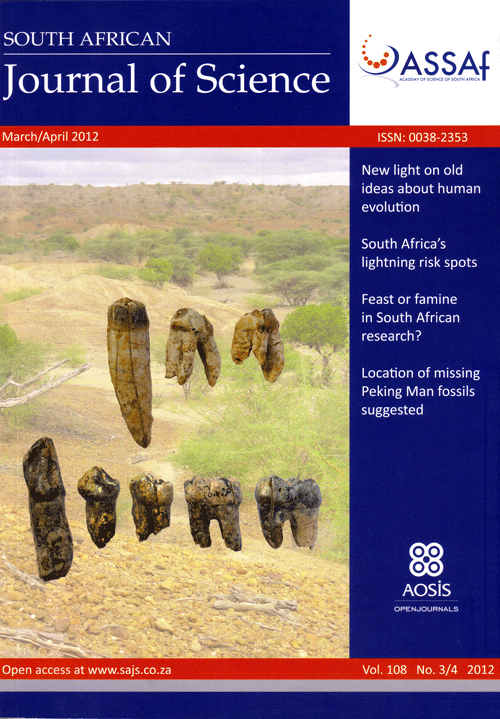The lightning climatology of South Africa
Keywords:
lightning climatology, lightning flash, lightning detection network, ground flash density, risk mapAbstract
In 2005, the South African Weather Service installed a state-of-the-art cloud-to-ground lightning detection network across the country. The data recorded by this network in 2006 was utilised in the development of an initial lightning climatology of South Africa. Until 2010, this climatology was based on data from a single year. This paper updates this climatology with the lightning data for the 2006-2010 period, which is the first actual lightning climatology by the South African Weather Service based on data covering 5 years. A number of different maps were created from these lightning data. These were lightning ground flash density, median peak kiloampere, percentage positive and average flash multiplicity maps. These four maps were in turn used to develop lightning intensity risk, positive lightning risk and total lightning risk maps. Analysis of the maps showed that the highest concentrations of lightning are found over the central to northern interior of the country, with areas along the northern parts of the eastern escarpment experiencing the highest flash densities and falling within the extreme risk category. Both the positive and total lightning risks are severe for almost the entire country. Only towards the west of the country does the lightning risk decrease. This lightning climatology can now be used throughout South Africa for various disciplines. It will be especially useful for setting lightning safety standards and identifying priority areas for installing lightning conductors and conducting public awareness campaigns.Downloads
Published
2012-03-05
Issue
Section
Research Articles
License

All articles are published under a Creative Commons Attribution 4.0 International Licence
Copyright is retained by the authors. Readers are welcome to reproduce, share and adapt the content without permission provided the source is attributed.
Disclaimer: The publisher and editors accept no responsibility for statements made by the authors
How to Cite
Gijben, M. (2012). The lightning climatology of South Africa. South African Journal of Science, 108(3/4), 10 pages. https://sajs.co.za/article/view/9888
Views
- Abstract 685
- PDF (1 MB) 180
- HTML 181
- EPUB 90
- XML 82
- Figure 1 0
- Figure 4 0
- Figure 3 0
- Figure 2 0
- Figure 5 0
- Figure 6 0
- Figure 7 0
- Figure 8 3












.png)